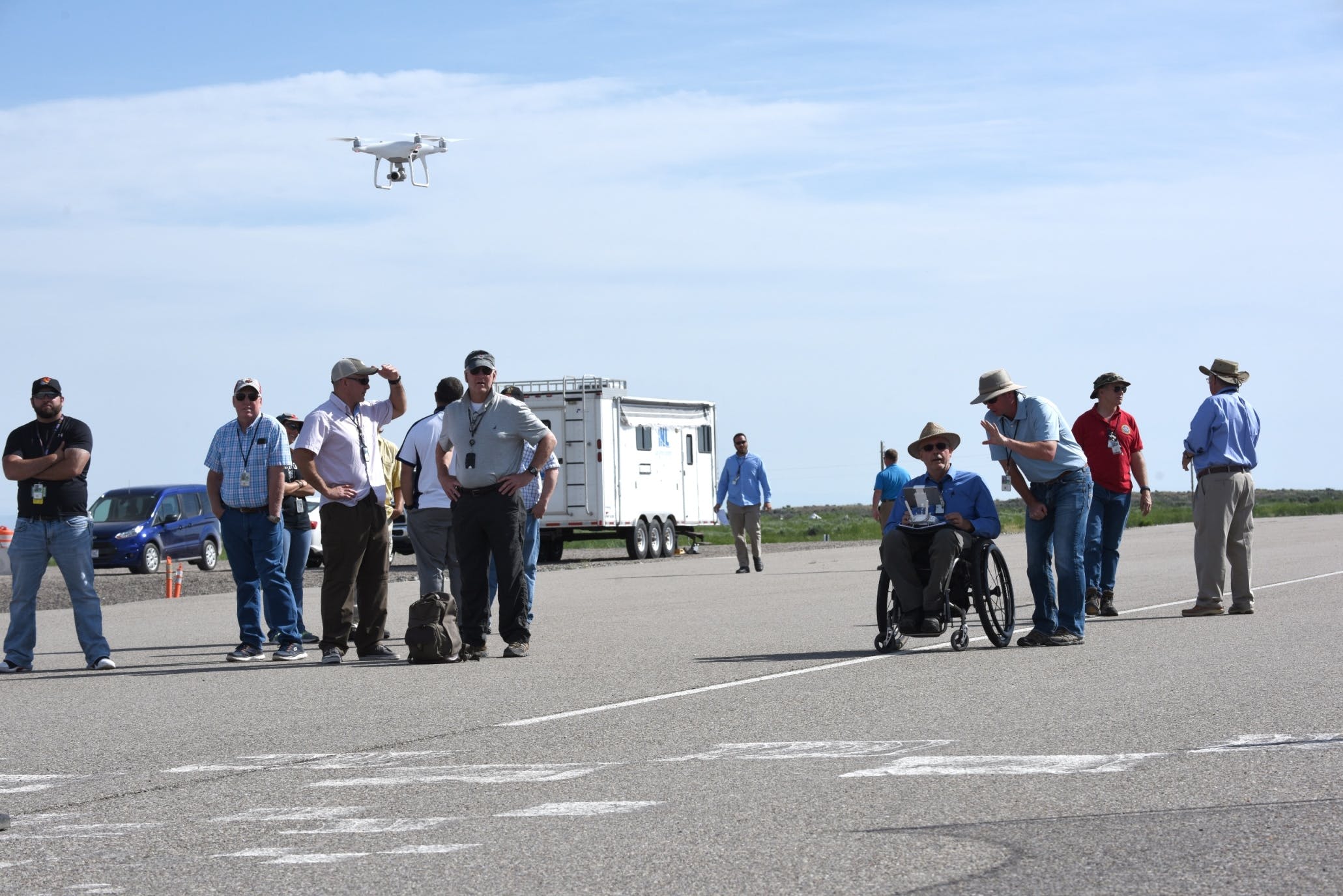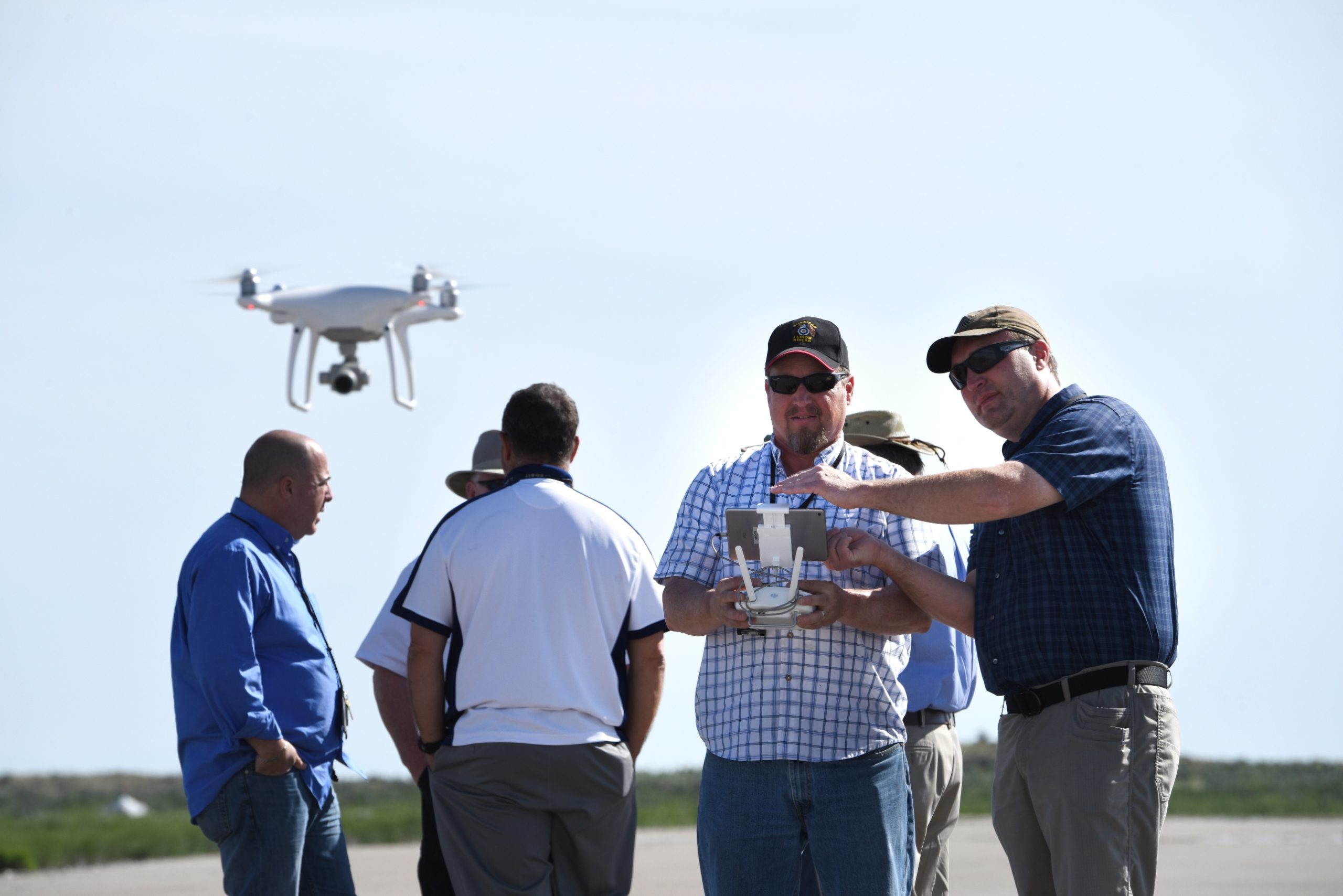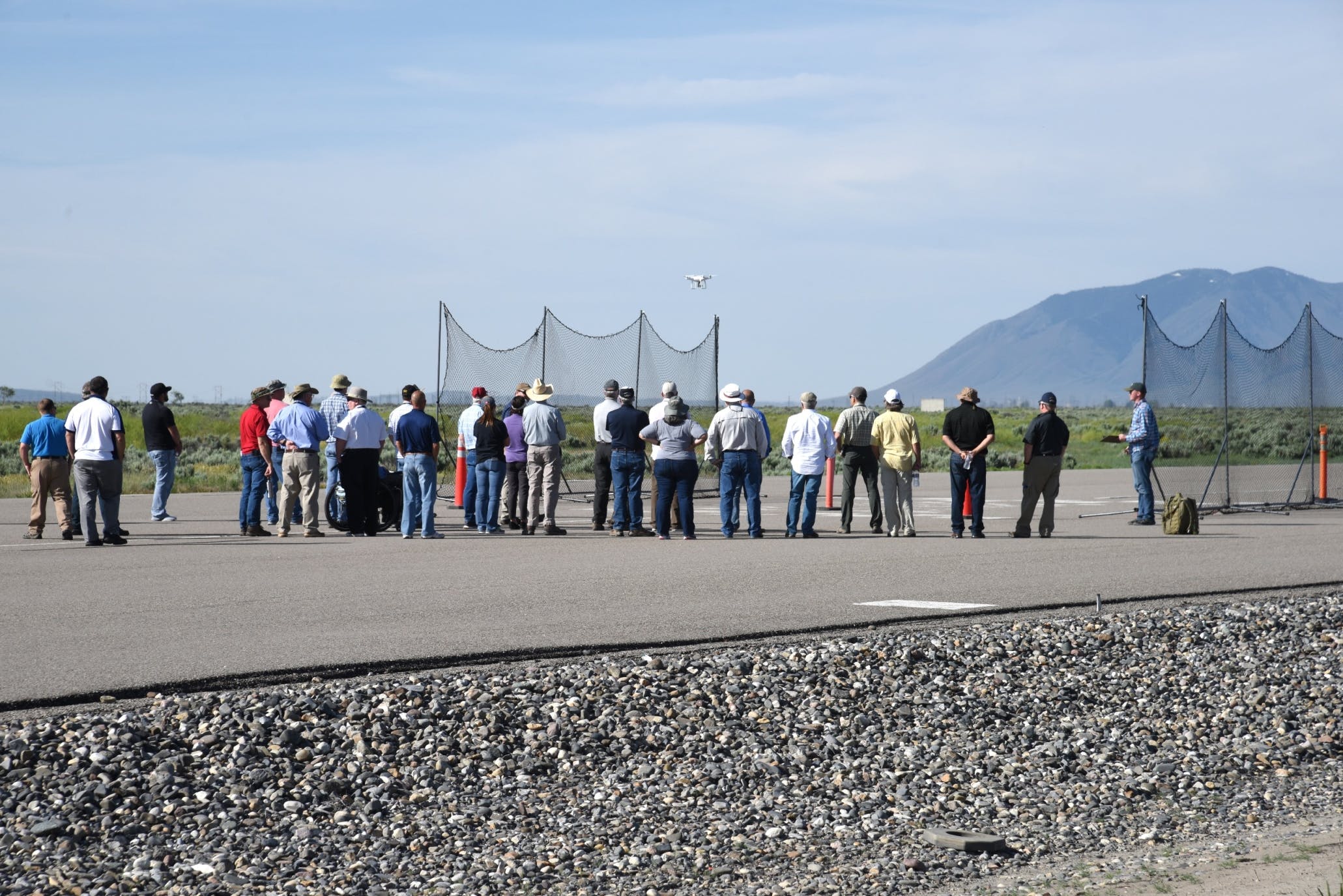New training at Idaho National Laboratory is being designed to ensure that unmanned aerial vehicles are used properly throughout the Department of Energy and its National Nuclear Security Administration.
The easy availability of unmanned aerial vehicles and their growing use has been a concern for DOE since 2015, when the first formal policy directives were issued.
This year, DOE’s Office of Aviation Management has decided that Unmanned Aerial Systems (UAS) have become prevalent enough to warrant the full attention of the Aviation Specific Recurrent Training they conduct every year.
“We come under a different level of scrutiny. We’re held to a different standard,” said Glen Wattman, director of DOE’s Office of Aviation Management.

DOE and National Nuclear Security Administration aviation managers and aviation safety officers have come to Idaho National Laboratory this week for three days of training in UAS rules, regulations and operations. The training program is being managed by Matthew Balderree, INL’s chief UAS pilot since 2014.
An Air Force veteran, Balderree has piloted unmanned aircraft for petroleum companies, power utilities and agricultural clients. He has consulted for Lawrence Berkeley National Laboratory and Nellis Air Force Base, and has submitted and helped maintain FAA Certificates of Authorization (COAs) for INL, multiple universities and consulting firms.
Balderree volunteered his UAS expertise at the 2016 DOE/FSSA aviation training, which, in addition to intensive aviation safety and regulatory instruction, is an annual opportunity for networking and sharing. “We’re extremely pleased Matt stepped up to do this,” Wattman said. “INL is providing a service by having people who know what to do.”
In fact, with regard to UAS expertise, INL and the Nevada Test Site have been identified as DOE’s two “centers of excellence.” DOE’s Idaho site has the second largest authorized flying area for unmanned aircraft, and INL has been involved with UAS for years, conducting such programs as the Rapid Airfield Damage Assessment System (RADAS) for the U.S. Air Force.

Across the national laboratory system in the last three years, there have been multiple instances of researchers and scientists acquiring UAS to aid in their data gathering. A DJI Phantom 4 Quadcopter, capable of capturing 4K ultra HD video at 30 frames per second, can be purchased complete with software for around $1,300. “In a lot of cases, we don’t know who needs to be educated until they have incorporated some kind of UAS into their operations. It’s important that we get as many people as educated as possible,” Wattman said.
In June 2015, the Department issued a memorandum stating that anytime a UAS was determined to be the right tool to accomplish a DOE governmental function, the Office of Aviation Management had to be engaged immediately. Aviation Management personnel were instructed to assist would-be UAS users in acquisition, registration, certification and management of their devices, and to offer training.
There are three classifications under which UAS can be operated: hobbyist, commercial and public. Private users, such as hobbyists, are subject to basic Federal Aviation Administration regulations, are encouraged to self-regulate, and are subject to fines and penalties for reckless behavior. Commercial users are required to get an operator’s license under Part 107 of Federal Aviation Regulation, which covers craft weighing 55 pounds or less.
Public users, depending on the area of operation and mission, may not be subject to FAA and local regulations. DOE’s directive, however, is that anyone using a UAV in their research or operations must meet the equivalent civil standards. “What we are saying is, ‘If you are going to get one, there are rules and regulations you have to follow to protect the agency and the public,’” Wattman said. “This is the first time we have been this specific.”

Balderree said he knows he’s got a big responsibility for the training. In addition to peers from throughout the DOE complex and national laboratory system, FAA was planning to have a representative on hand to observe.
Academic instruction is at the Center for Advanced Energy Studies. The hands-on training is at INL’s Energy Systems Laboratory and on a 100-by- 1,000-foot runway north of the Central Facilities Area at DOE’s Idaho Site.
The UAS training will cover academic studies, hands-on operations of both small, lightweight and larger UAS craft. The training emphasis will be on safe operations and responsible deployment of UAS. The class is comprised of 42 aviation professionals from DOE/NNSA.
Other government agencies are watching DOE/NNSA, considering it a test bed for new legislation and protection of infrastructure, Wattman said. Future DOE/FSSA training events may be split between manned and unmanned flight issues.
For his part, Balderree said he hopes to take what he learns at the June training and see how safety standards can be spread throughout the DOE complex. “Hopefully, this can be about collaboration,” he said.





